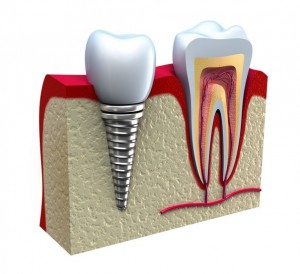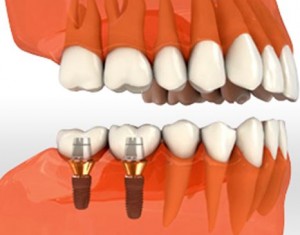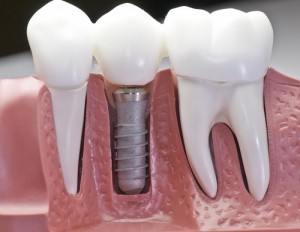Molar implantation

Until recently, a person who had lost molars for one reason or another was doomed to remain without teeth until the end of his life.
Currently, for their full recovery, dentistry can offer patients dental implantation.
Implantation of molars has a very high probability of success.
Features
- Implantation is carried out using very durable titanium structures, because molars have the greatest chewing load.
- The implantation method depends on the individual characteristics of the dentition, taking into account the wishes of the patient.
- Most often, the classical method of implantation is used.
Benefits

- When implanting molars, grinding of neighboring teeth is not performed.
- The aesthetics of today's implants are higher than bridges.
- Implants are more reliable than other prosthetics.
- Lack of external difference between implanted and real tooth.
- Implantation excludes jaw bone atrophy.
Methodologies
- The installation of molar implants is carried out according to the classical scheme: a two-stage method. After a successful period of implant engraftment, an abutment is installed with subsequent fixation of artificial teeth.
- With the use of simultaneous implantation.
- By implanting mini - implants with subsequent fixation of the denture.
Indications
- The absence of one or more molars.
- After the extraction of the molar.
- When other prosthetics are not effective.
Types of Implants
When installing molar implants, depending on the characteristics of the dentition, standard or individual implants are used:

- The most common is a root implant, which is implanted in the bone tissue of the jaw, then a denture is fixed on it.
- If bone tissue is insufficient, then a plate implant is used. To implant this design, a width of bone tissue of up to three millimeters is sufficient.
- In the case of severe thinning of the bone, a subperiosteal construction is used, which is installed between the periosteum and the bone under the gum.
- With atrophy of bone tissue, it is possible to install intramucosal mini implants, which are installed without implantation in bone tissue.
Implants used for restoration of molars are made of ceramics, titanium and its alloys, a chromocobalt alloy, which take root fairly well and are not perceived by the tissues surrounding the implant as a foreign body.
Life time
Depending on the chosen technique and the quality of the implant being implanted, its service life can be from 5 to 20 years or more.
Factors affecting the life of implants:
- Qualification of the specialist who performed the implantation.
- Implant Implantation Technology.
- The material from which the implant is made.
- Type of implantable structure.
- The course of the postoperative period.
- Hygienic care of implants.
- Regular patient checkups at the dentist.